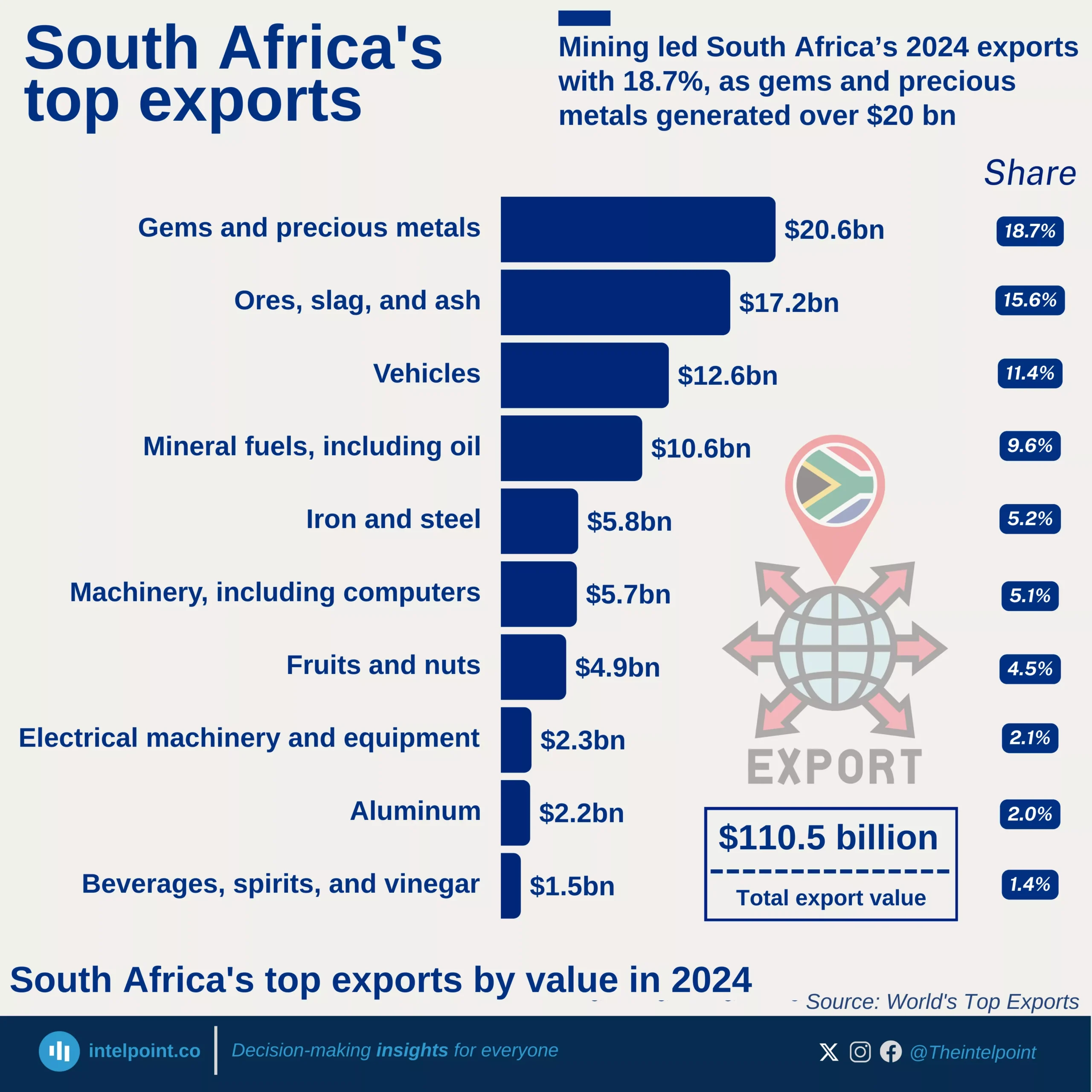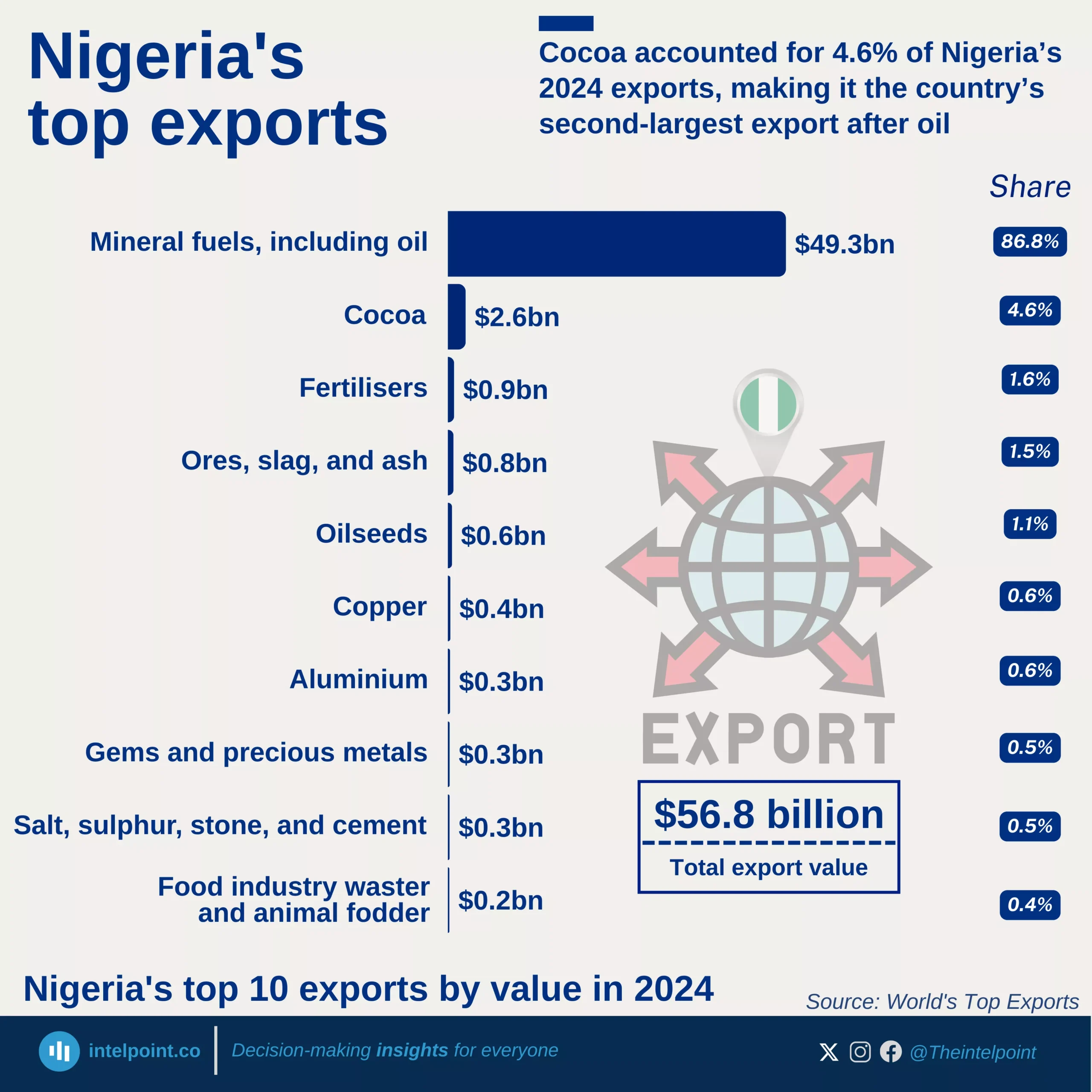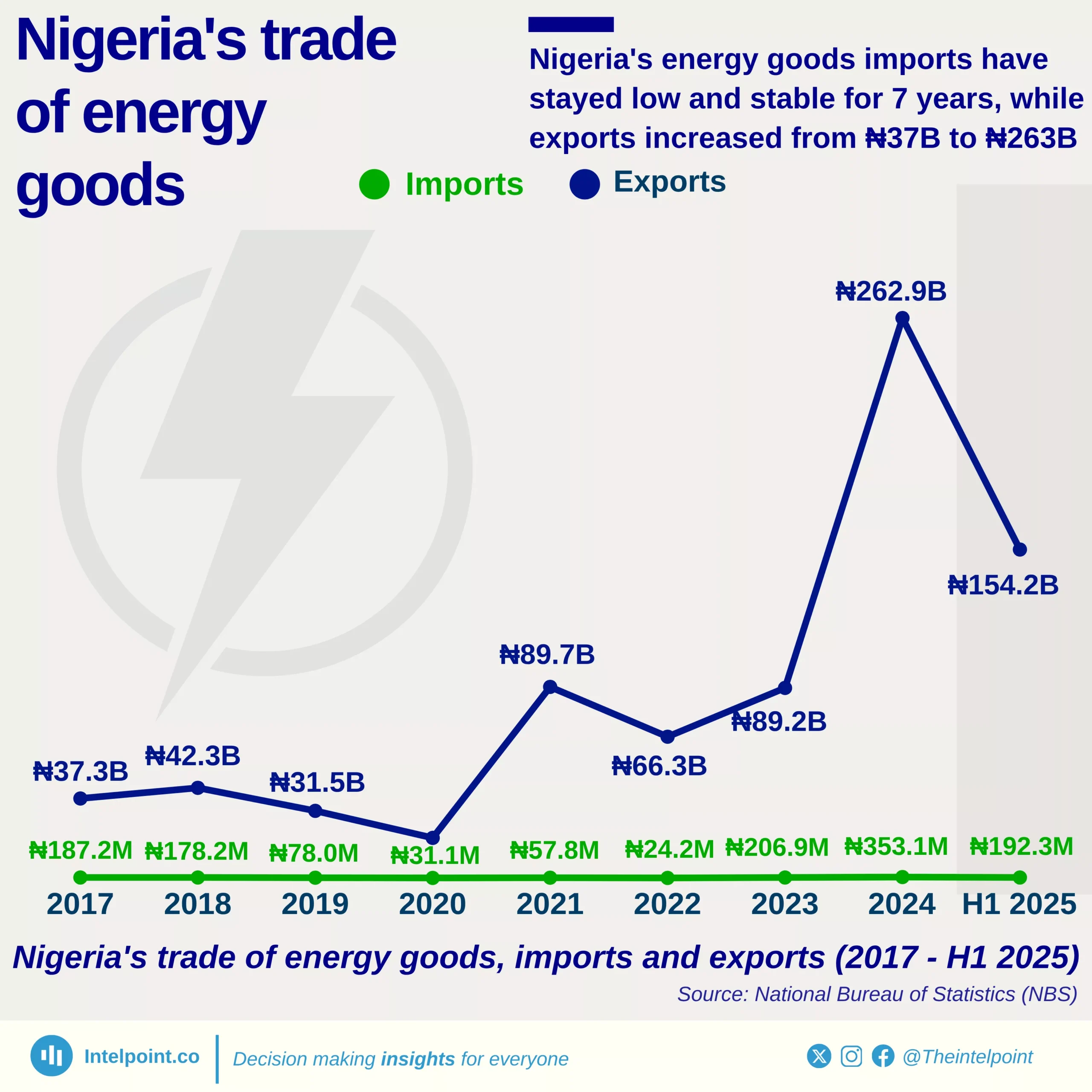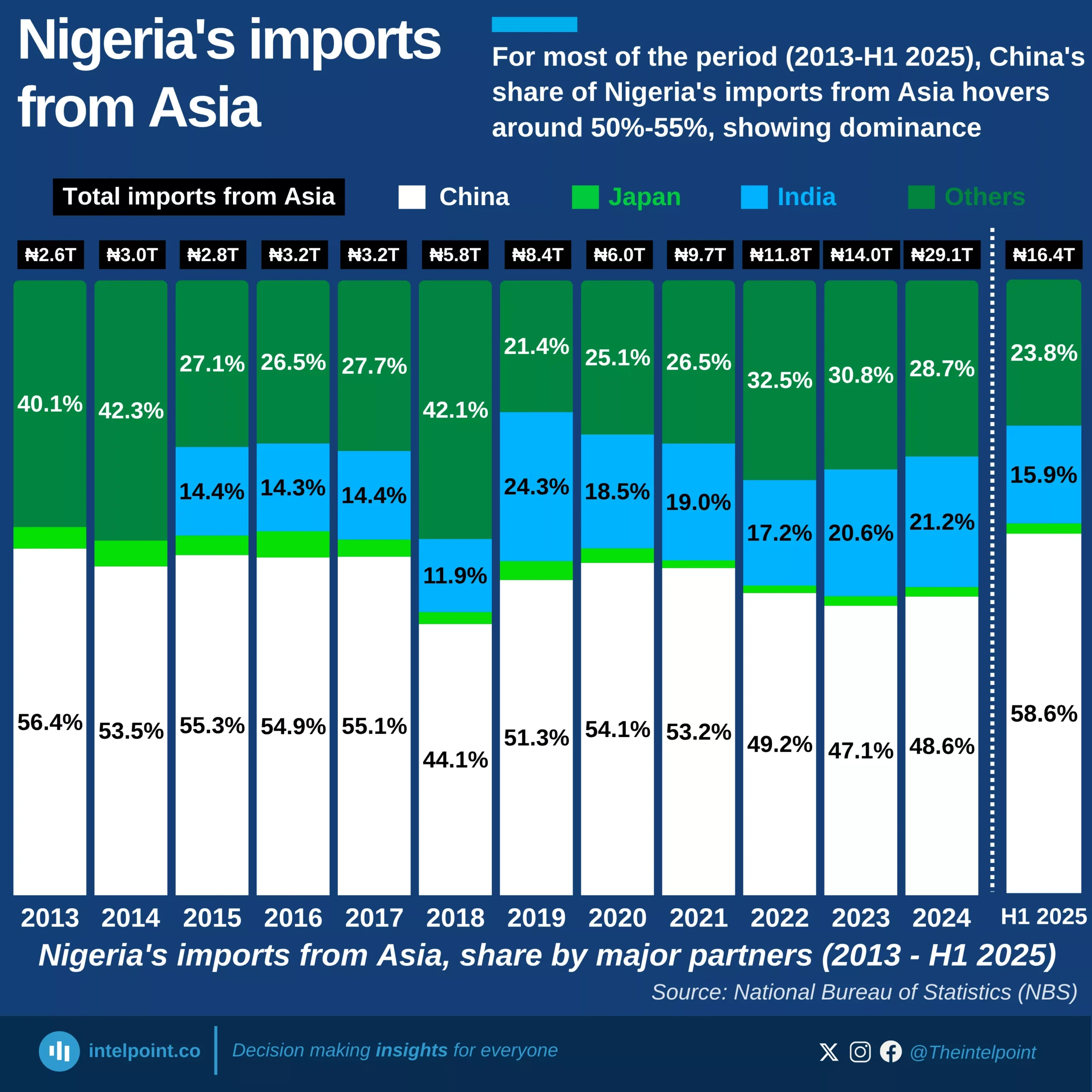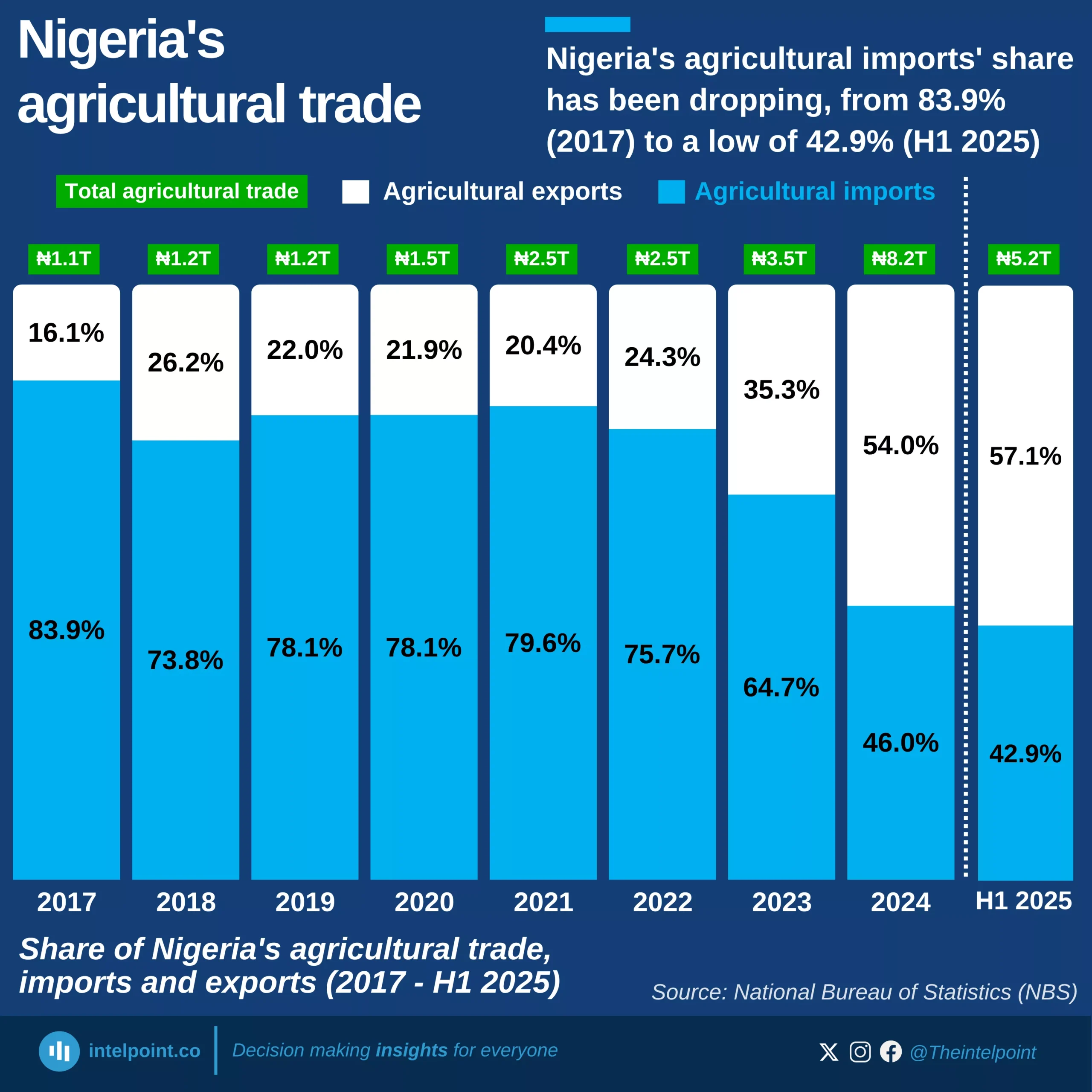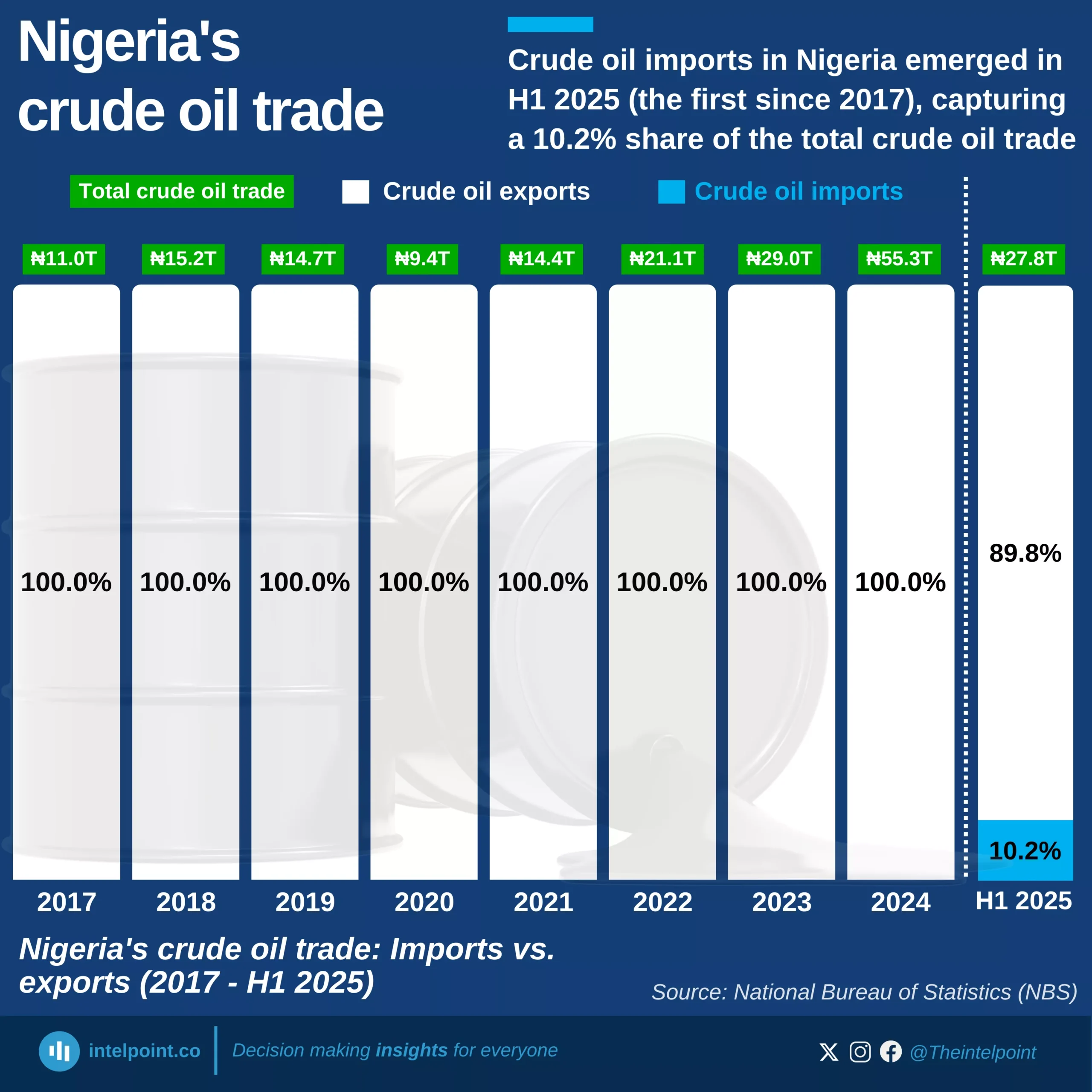Copper exports in Africa are heavily concentrated in just a handful of countries, with the Democratic Republic of Congo (DRC) and Zambia dominating the trade. Together, these two countries control nearly 80% of the continent’s copper export value, underscoring how central they are to Africa’s role in the global copper market. In 2024 alone, the DRC exported $19.8 billion worth of copper—over half of Africa’s total—while Zambia followed with $7.6 billion, accounting for more than a fifth of the total.
Beyond the top two, other countries like Tanzania ($2.2 billion), Congo ($1.3 billion), and South Africa ($1.1 billion) also play key roles, though at much smaller scales. While 52 African countries export copper, just 10 of them control 98% of the continent’s copper export value, leaving the other 42 countries with a combined share of only $0.7 billion.
